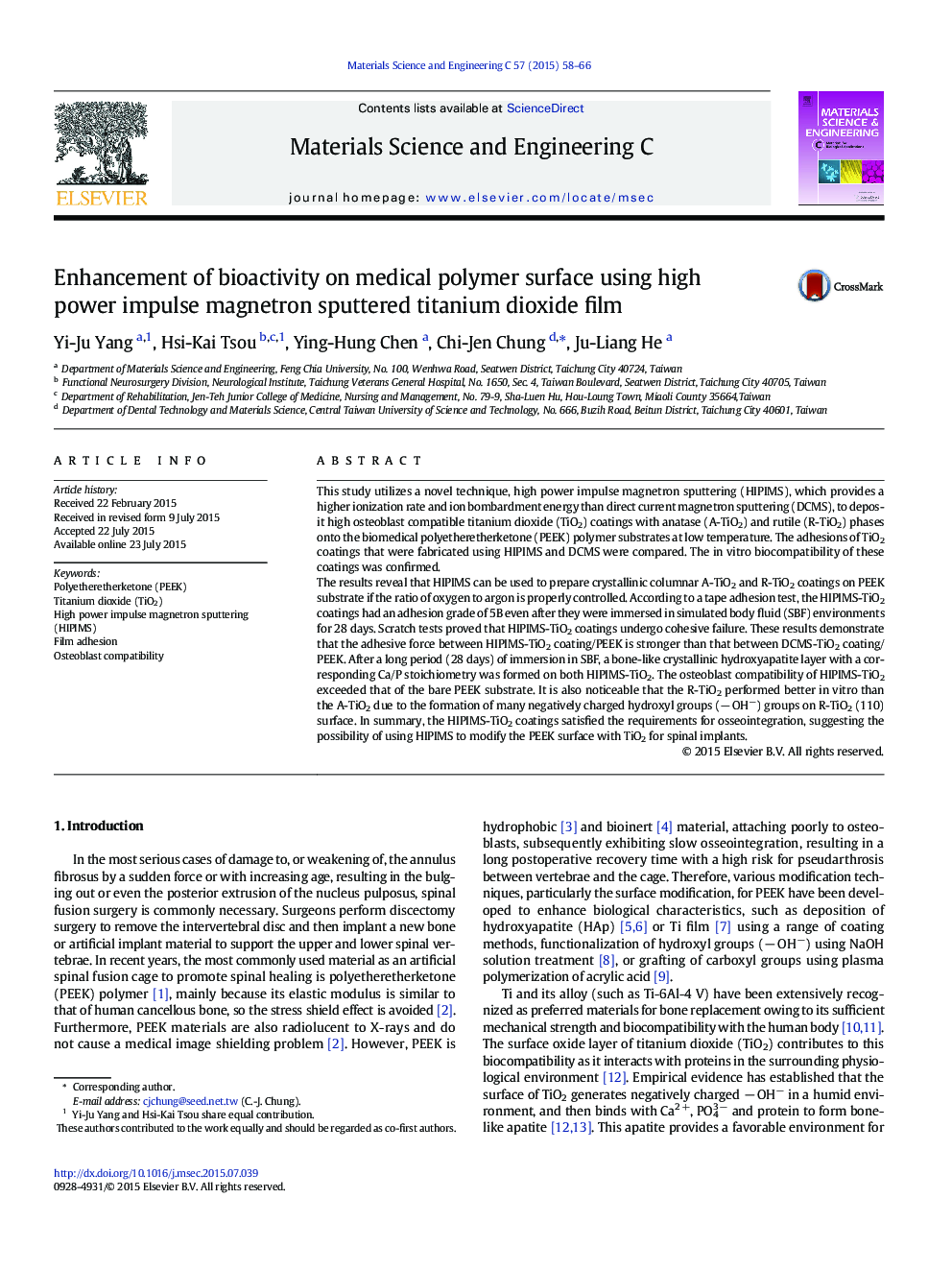| Article ID | Journal | Published Year | Pages | File Type |
|---|---|---|---|---|
| 7868531 | Materials Science and Engineering: C | 2015 | 9 Pages |
Abstract
The results reveal that HIPIMS can be used to prepare crystallinic columnar A-TiO2 and R-TiO2 coatings on PEEK substrate if the ratio of oxygen to argon is properly controlled. According to a tape adhesion test, the HIPIMS-TiO2 coatings had an adhesion grade of 5B even after they were immersed in simulated body fluid (SBF) environments for 28 days. Scratch tests proved that HIPIMS-TiO2 coatings undergo cohesive failure. These results demonstrate that the adhesive force between HIPIMS-TiO2 coating/PEEK is stronger than that between DCMS-TiO2 coating/PEEK. After a long period (28 days) of immersion in SBF, a bone-like crystallinic hydroxyapatite layer with a corresponding Ca/P stoichiometry was formed on both HIPIMS-TiO2. The osteoblast compatibility of HIPIMS-TiO2 exceeded that of the bare PEEK substrate. It is also noticeable that the R-TiO2 performed better in vitro than the A-TiO2 due to the formation of many negatively charged hydroxyl groups (â OHâ) groups on R-TiO2 (110) surface. In summary, the HIPIMS-TiO2 coatings satisfied the requirements for osseointegration, suggesting the possibility of using HIPIMS to modify the PEEK surface with TiO2 for spinal implants.
Keywords
Related Topics
Physical Sciences and Engineering
Materials Science
Biomaterials
Authors
Yi-Ju Yang, Hsi-Kai Tsou, Ying-Hung Chen, Chi-Jen Chung, Ju-Liang He,
